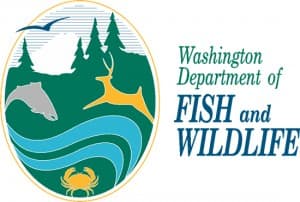Washington DFW: Should Winter Bird Feeding Include Hummingbirds?
OutdoorHub 11.04.12

As fall advances towards winter and bird feeding stations are set up in many Washington backyards, should hummingbird nectar feeders come down or be maintained?
In eastern Washington, the answer is simple: nectar feeders come down because the birds are gone. The three species of hummingbirds that can be seen at eastside backyard feeders during the spring and summer – rufous, calliope and black-chinned – have migrated south to wintering areas by now.
In western Washington, the answer is a little more complicated because some Anna’s hummingbirds can be year-round residents. But would leaving nectar feeders out in westside backyards lure rufous hummingbirds into staying when they should head south?
Washington Department of Fish and Wildlife (WDFW) biologists say most research on whether feeders of any kind keep birds from migrating indicates that the impact is insignificant, at least from a species population standpoint. It’s possible that a few individuals might linger longer, maybe even be stranded in winter conditions when they should be someplace else. But for the most part, birds that migrate seasonally will do so, even if feeders are left out.
In fact, during the last decade of annual Christmas Bird Counts (CBC) in Washington, no black-chinned or calliope hummingbirds were counted and only one rufous hummingbird (in 2002) was counted. Anna’s hummingbirds, on the other hand, are always in western Washington CBC tallies; 179 were counted in 2001 and 1,137 in 2011 (an increase that may be as reflective of the number of actual observers and count areas as birds attracted to more feeders.)
WDFW biologist Patricia Thompson of Mill Creek notes that the 1993 – 2001 Winter Backyard Bird Surveys she compiled seemed to show an increase in the number of Anna’s and rufous hummingbirds over the years, although she’s not sure why.
Biologists agree that a greater long-term impact on bird migration is probably climate change and associated changes in available natural habitat across the landscape. Birds have many triggers that drive them to migrate, not the least of which is changing daylight hours.
Biologists also agree that feeders of any kind are not necessary for any birds, they simply make viewing birds easier for us. For most birds, feeders are bonus food troughs but not necessarily food traps.
“We need to support natural winter processes,” said WDFW biologist Chris Anderson of Mill Creek, “and that includes shifts in foraging areas for migrating species like hummingbirds. Taking nectar feeders down at this time of year is probably more natural and avoids the potential for keeping birds dependent on them when they should be moving on. Wild birds are not pets that need to be taken care of through feeding. But if you want to maintain feeders, be responsible and committed to it. Keep those feeders clean, filled, and heated with lights if necessary.”
Advice from Audubon, American Bird Conservancy, and the Cornell Lab of Ornithology includes only keeping hummingbird feeders up for two weeks in the fall after you see the last bird using them.
They also say:
Maintaining a backyard hummingbird feeder can help provide the birds with nectar critical to their survival, especially during the fall when they need to double their body mass before migration. (Contrary to a common fear, the extra food won’t stop a hummer from migrating south when it’s time for it to go.) To ensure your yard is a safe and nutritious stopover for hummingbirds:
- Fill the feeders with sugar water, made by combining four parts hot water to one part white sugar, boiled for one to two minutes. NEVER use honey, which promotes the growth of harmful bacteria, or artificial sweeteners, which have no nutritional value. Also avoid red food coloring.
- Clean the feeders with a solution of one part white vinegar to four parts water about once a week. If your feeder has become dirty, try adding some grains of dry rice to the vinegar solution and shake vigorously. The grains act as a good abrasive. Rinse your feeder well with warm water three times before refilling with sugar solution.

